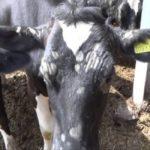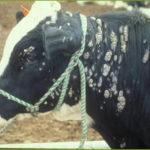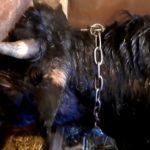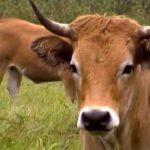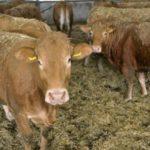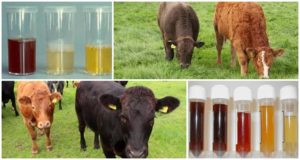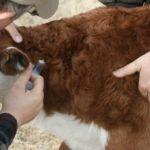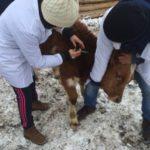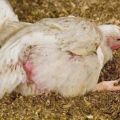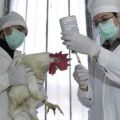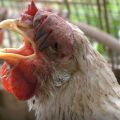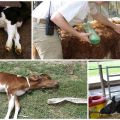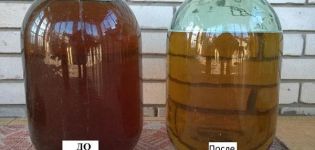Ringworm symptoms and ointment to treat a calf at home
Ringworm in medicine is also called trichophytosis. This is a fairly common fungal pathology that affects the skin. It provokes pain in animals, which quickly affects the entire body. In the absence of adequate therapy, there is a risk of infection and people. Therefore, when ringworm occurs in a calf or an adult, it is recommended to use the ointment for treatment immediately.
Content
What is this disease
The development of this pathology is associated with the impact of harmful fungal microorganisms. The pathology is usually accompanied by dermatitis. At the same time, micromycetes are dangerous for animals and people. The risk of developing pathology increases with a weakening of immunity.
Pathology can occur in young and adult animals. Most often, it provokes exhaustion and causes a decrease in productivity. For calves, pathology is a real danger, since it causes a developmental lag. At the same time, animals stop gaining weight and are faced with disturbances in the functioning of the nervous system.
Factors contributing to infection
In case of violation of sanitary and hygienic standards on the farm, the risk of infection increases to 90%. The disease can spread rapidly. It is easily transmitted from infected individuals to healthy ones.
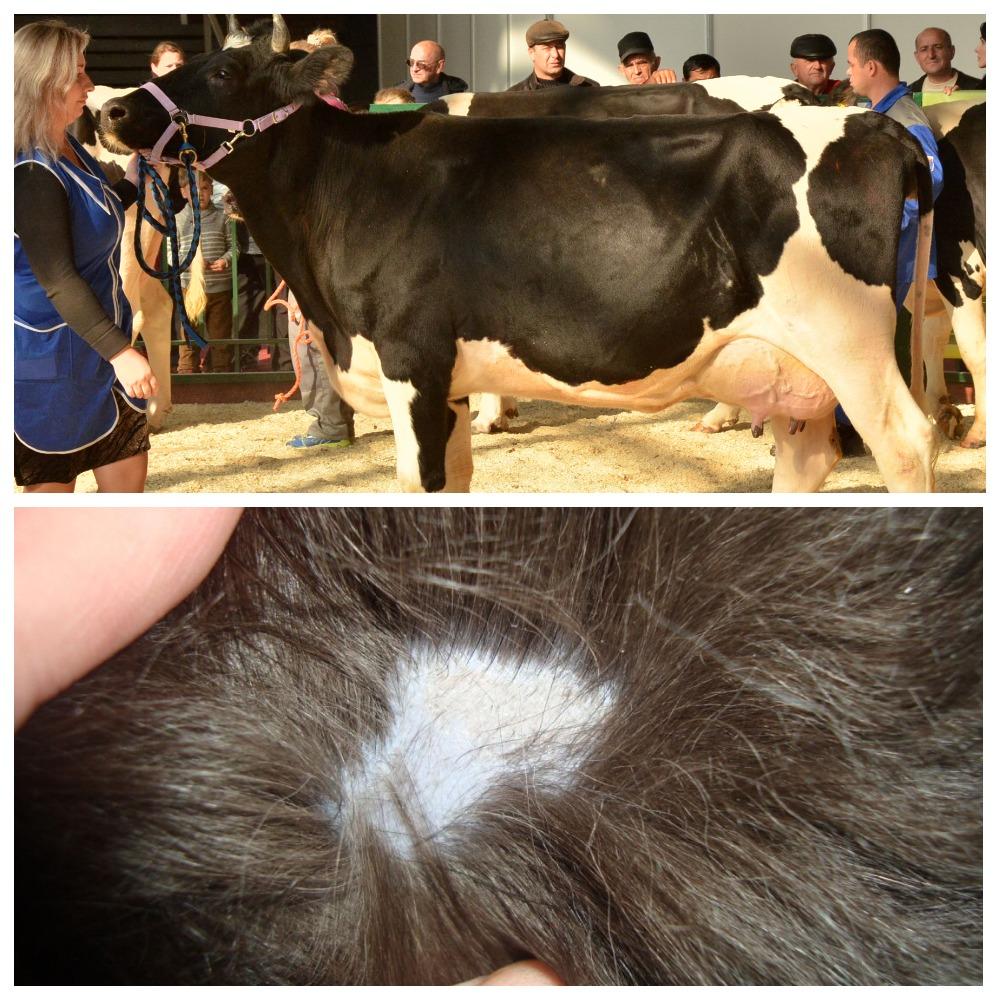
There are a number of factors that increase the risk of trichophytosis. These include the following:
- insufficient disinfection of instruments used to care for calves and premises;
- excessive moisture;
- crowded keeping of animals;
- insufficient illumination;
- lack of vitamins;
- violation of the rules of care.
The spread of infection is possible even during the incubation period in the absence of symptoms of the disease on the animal's body.
Unpleasant and dangerous symptoms
Pathology is characterized by pronounced symptoms, therefore it is difficult to confuse it with other ailments. If in doubt, you should consult with a veterinarian who can tell you what ringworm looks like and make the correct diagnosis.
Fungal infection in livestock can be recognized by the following:
- exfoliation of the skin in the affected area by the pathogen;
- the appearance of a gray bloom on the wool - later these areas go bald;
- hair loss in the form of hairs cut off at the root - this leads to damage to the follicles by fungi;
- the appearance of bald spots - they have a round or oval shape and differ in size.
As the pathology develops in animals, aggressiveness and irritability increase. This is due to constant itching. In addition, infected calves appear emaciated. This is due to loss of appetite and deterioration in digestive functions.
If you do not start therapy on time, your health worsens. If a secondary infection joins the shingles, there is a chance that the affected animal will die.
Diagnostic measures
To establish the correct diagnosis, it is enough to examine the calf. Ringworm has typical symptoms. Sometimes the exclusion of other dermatological pathologies is required. In this case, you need to take samples of diseased tissue for analysis. For this, it is recommended to use scales of hairs and skin. Usually, differential diagnosis is carried out with scabies, since these pathologies have a similar clinical picture.
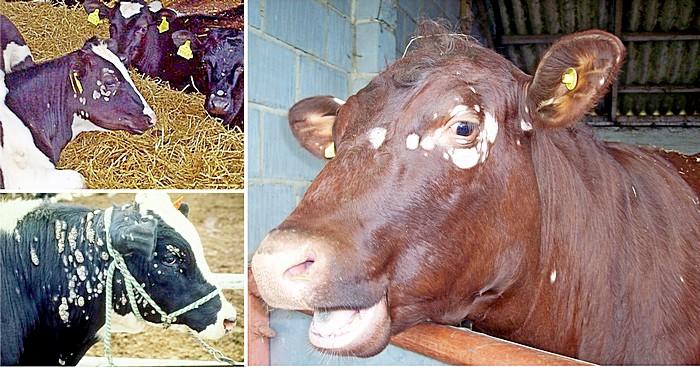
When conducting a diagnosis, a veterinarian is interested in the form of the course of the disease - it can be erased, deep, superficial, vesicular. It should be borne in mind that in adult animals, the disease is milder. This is because the immune system is able to fight off the infection. Young animals are characterized by weaker immunity.
Therefore, the fungus is able to penetrate into the deep layers of the dermis. This provokes the appearance of a deep or vesicular form of pathology.
Rules for the treatment of lichen in cattle
Trichophytosis is treated in different ways. Therapy is selected taking into account the type of pathology and the degree of its severity. At the initial stage, it is enough to use antimycotic drugs and keratolytics. In difficult cases, vaccination is carried out.
Antimycotic drugs
Before treating a calf or cow with antimycotic ointments, you need to remove dirt, crusts and other substances that will prevent the active substance from getting into the inflammation focus. It is best to cleanse, soften and steam the skin before applying the ointment.
Usually, the following agents are used to treat cattle:
- Ointment "Yam" - is an antifungal drug, which contains antifungal and astringent components. After 2 treatments, the crusts will flake off within 1 week. Hair regrowth testifies to the effectiveness of therapy.
- "Zoomikol" - the active component of the product is thiabendazole. Under its influence, micromycetes stop their reproduction. The substance is produced in the form of a spray. It is required to evenly apply it to the sore spot and capture 1-2 centimeters of healthy skin. It is recommended to re-process the animal after 3-5 days. The course of therapy includes 3-4 applications of the substance.
- "Imaverol" is produced in the form of a thick concentrate for making an emulsion. For this, the substance is mixed with water in a ratio of 1: 5. The composition is recommended to be used a day before In this case, the animal is recommended to be processed 4 times with an interval of 3 days.
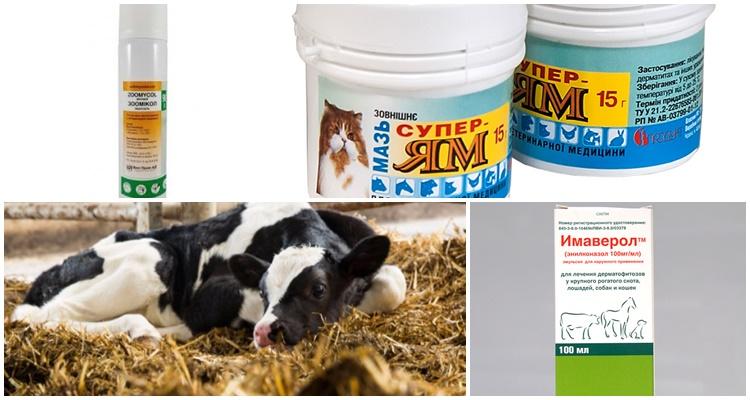
Keratolytic agents
Such drugs are used to restore the epidermis. This should be done in combination with antimicrobial agents. The most effective keratolytics include:
- tar ointment;
- iodine solution with a concentration of 10%;
- solution of brilliant green with a concentration of 10%;
- Sulfuric ointment.
Immunization
Vaccination can be used to prevent and accelerate the recovery of affected individuals. Today, the following means are used for these purposes:
- TF-130;
- SP-1;
- LTF-130.
The vaccine includes a sterile fungal culture.When a calf enters the body, it develops resistance to the causative agent of pathology. Animals must be vaccinated before 6 months of age. Immunity is developed in 2 weeks and remains for 7 years.
Therapy of comorbidities
Sometimes, in addition to ringworm, it is required to treat concomitant pathologies. Under the influence of micromycetes, a significant weakening of the animal's body occurs. In such a situation, there is a risk of parasites or ticks affecting the calf. “Ivermek” helps to cope with related violations.
Disinfection measures
To make the treatment more effective, it is important to disinfect the stall and feeders. Fungal spores persist in the external environment for many days. To avoid their overgrowth, it is recommended to disinfect feeders, equipment, floors, walls. For this purpose, it is permissible to apply the following:
- formalin solution - its concentration should be 5%;
- bleach solution - make with a concentration of 20%;
- carbolic solution.
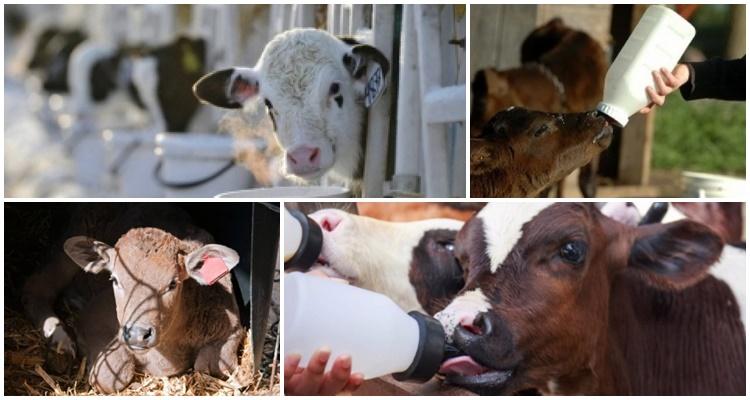
Folk remedies
For the treatment of ringworm at home, it is permissible to use the following means:
- Tar ointment - for its manufacture, it is recommended to mix tar with petroleum jelly in a ratio of 1: 5. It is worth applying the composition twice a day - in the morning and in the evening.
- Turpentine ointment - for this, mix turpentine with tar in a 2: 1 ratio.
- Composition based on copper sulfate - it is mixed with lime and sulfur in a ratio of 1: 2: 3.
Prevention
To avoid ringworm, do the following:
- keep the pen clean;
- destroy rodents;
- from time to time, perform an examination of calves for the timely detection of pathology;
- timely vaccinate animals from the risk zone.
The vaccine is recommended to be administered 2-3 times with an interval of 10-14 days. For infected individuals, a double dose should be used.
Ringworm is a serious threat. This is due to its rapid spread throughout the body of the animal. Under the influence of a fungal infection, the calf's immunity suffers, which increases the risk of infection with bacteria. Therefore, at the first symptoms of pathology, it is recommended to immediately take action.
